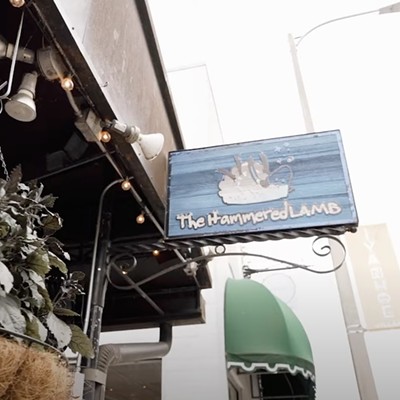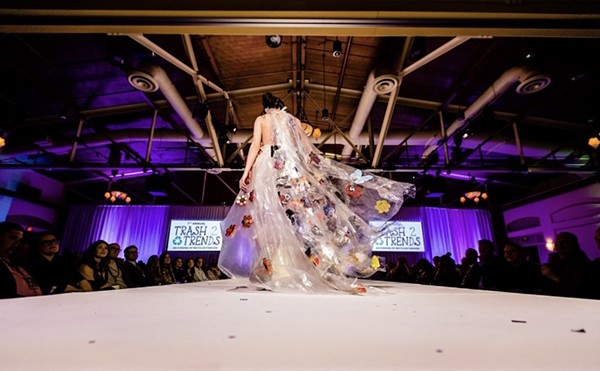Boxed in by black frames and rubbed with dirt -- this is what's immediately striking about Nellie Van Scoy's assemblages of everyday objects, currently on exhibit at the Mount Dora Center for the Arts. Van Scoy hangs shallow boxes with several compartments. Inside are sewing materials, props for children's games, doll parts, drawings and knickknacks.
The fact that the objects are caked in dirt or covered in paint mirrors their layered effect: Different meanings emerge depending on what's nearby or even the order in which you notice the items. For example, a painting of a Renaissance-looking lady anchors "Portrait of a Southern Lady," and her resigned, internally clenched expression seems to feed off the objects around her: tea cups, buttons and such. They're a glimpse of her fate -- circumscribed as it is, just as she's hemmed in by the frame. It took me several minutes to register that her white, veil-like hat resembles the robes of a Ku Klux Klan member, the self-appointed protector of her womanhood.
Other works function like word associations. In "Friendlies or Keepsies" clusters of marbles -- which kids shoot -- share space with a gun, a different kind of playground prop. Although gripping, this and a few other works lack the sustained reverb of "Portrait of a Southern Lady." Child's games make one wistful, but is this emotion too easy?
Most fun are the three "Belle Skirts" hanging from the ceiling. At first these seem to have one punch line: Hoop-skirt slips represent -- ta-dah -- what's hidden from view. And just when you're about to say, "Clever," and move on, more unravels. Slips are fashioned to support elaborate dress, and their faded white cotton is comfortably simple. Best of all, people are lured to interact with the skirts: In order to see photos and hear taped voices you must duck under the shoulder-high skirts and stand there, inside, underneath. Watching someone slowly turning under one of these slips is pretty much a hoot.
Personal and cultural history blend as tossed-aside items become narratives. People's stories are often "about the simplest things that we have failed to share with one another," says Van Scoy, a Georgia native. "I try to fight the nostalgic and sentimental viewpoint," she says. "To engage in sentiment, yes, but not sentimentality."















